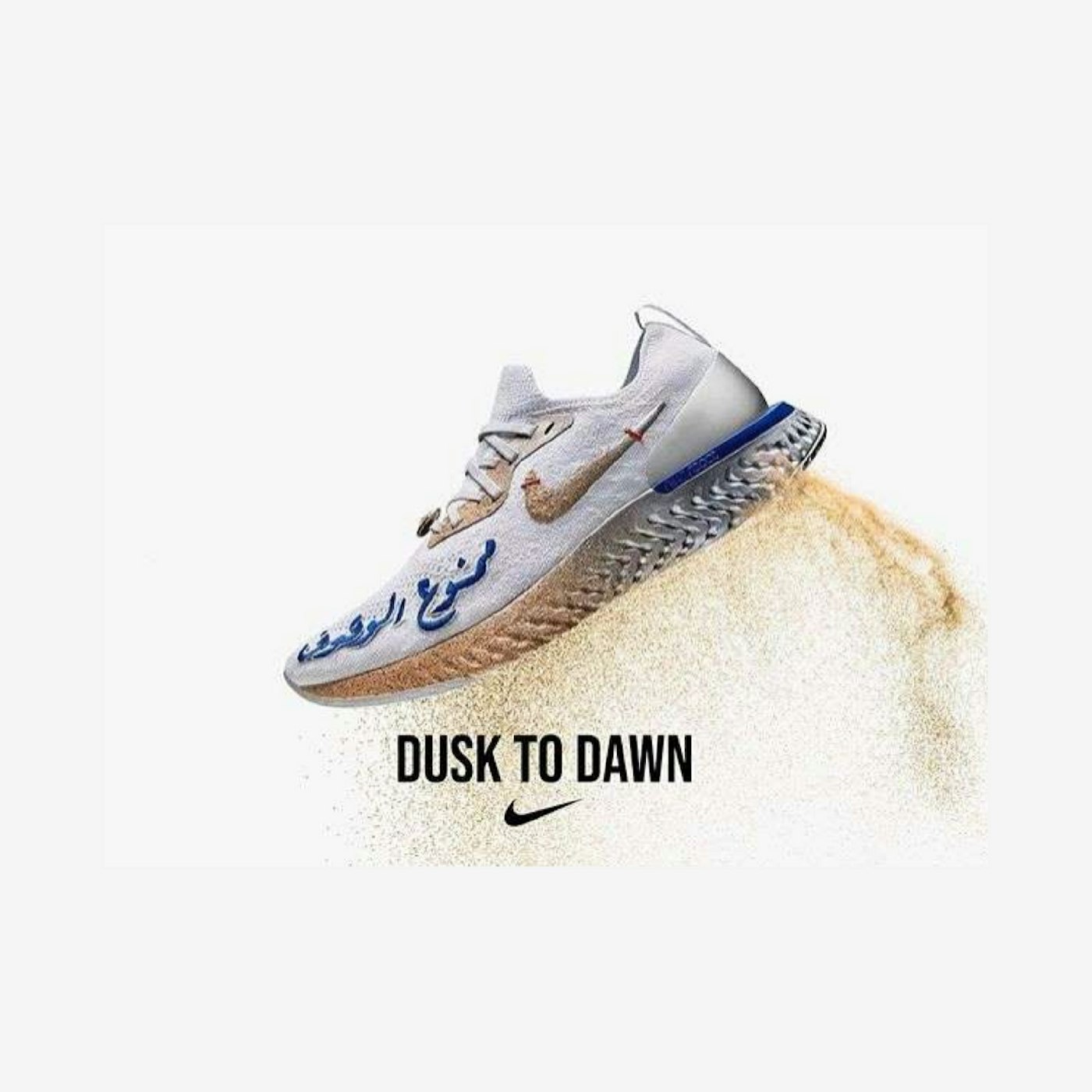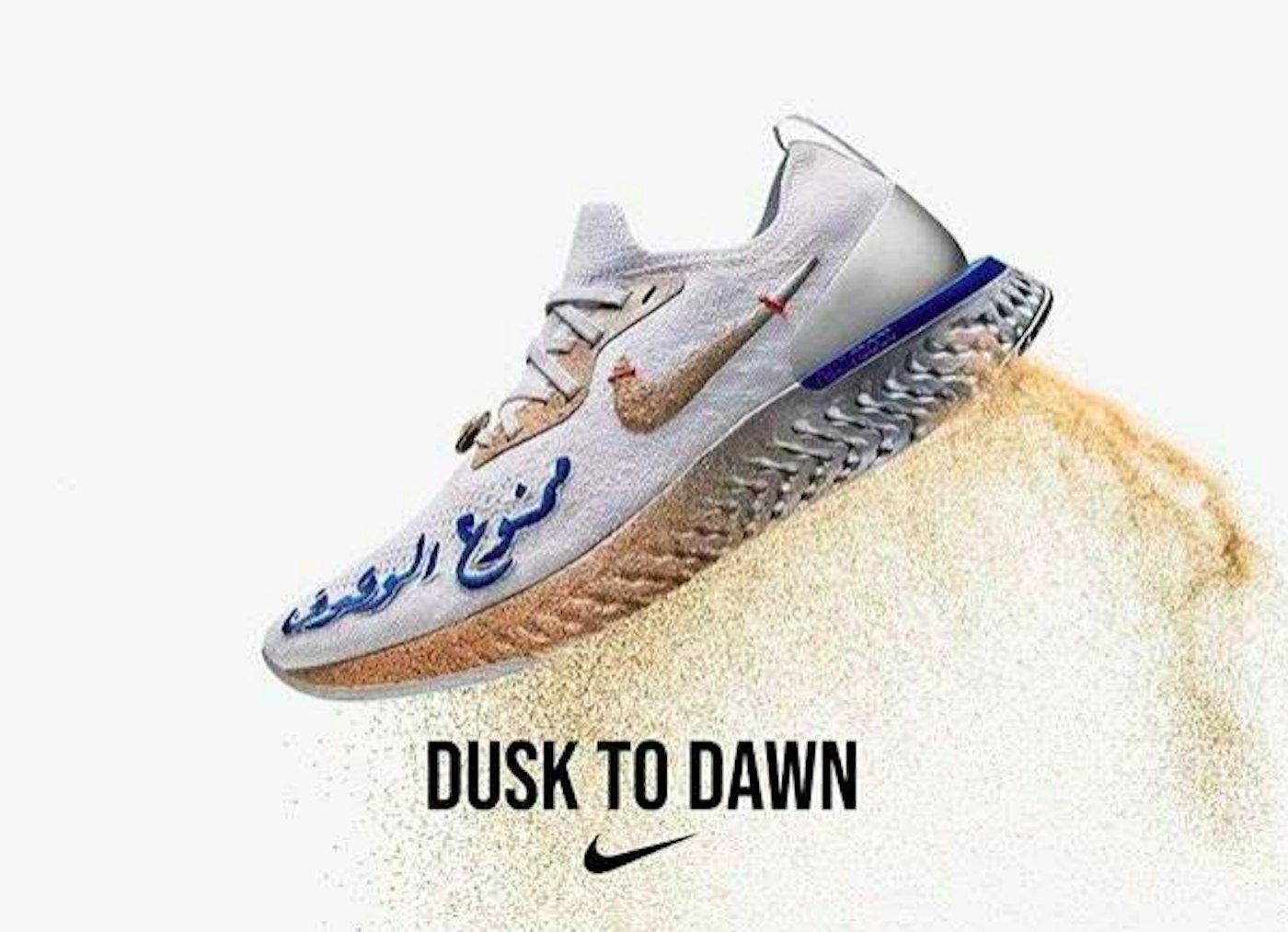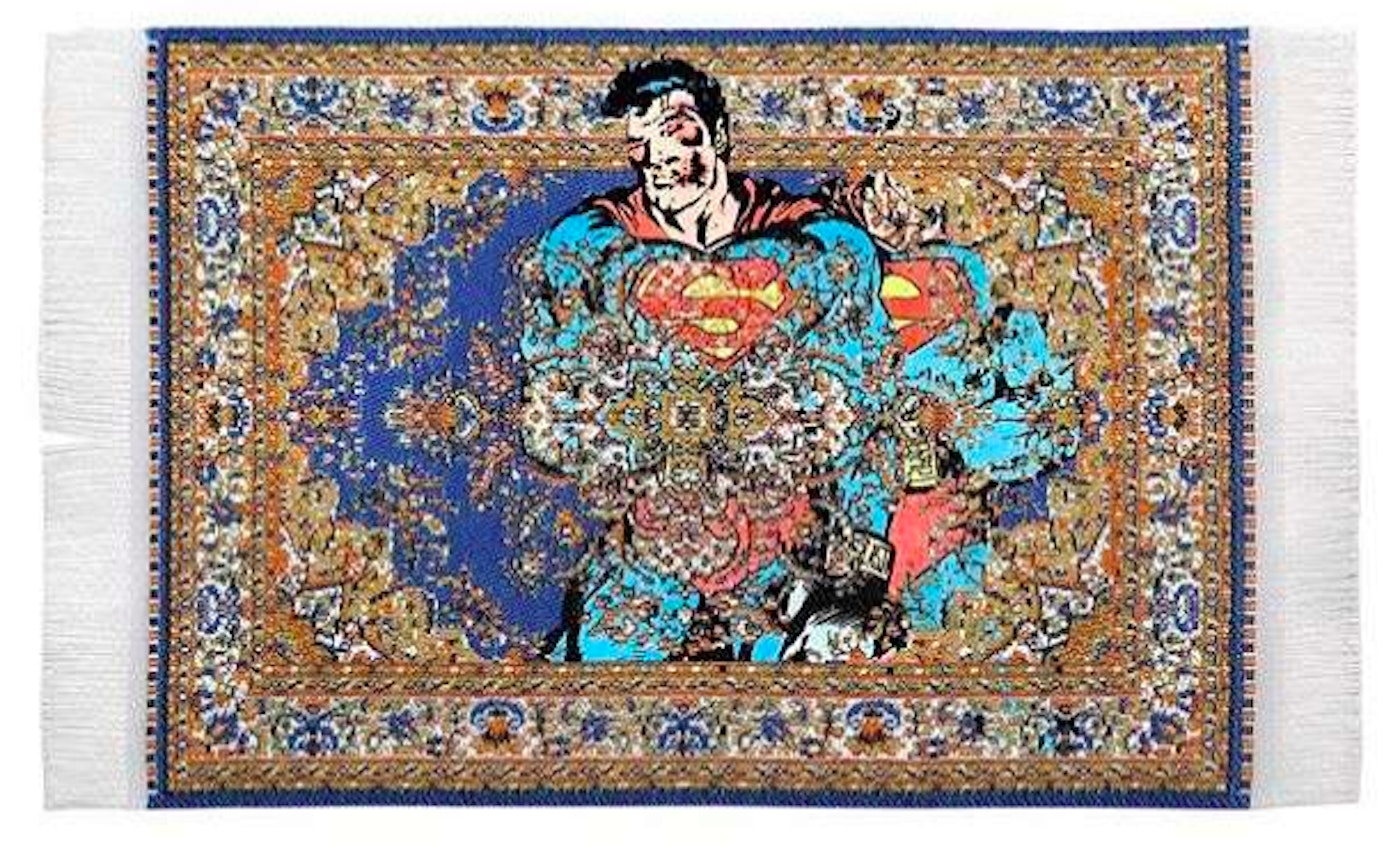Nike Launches Ramadan Inspired Sneaker in Collaboration With Arab Designer: Is “ممنوع الوقوف” Really the New “Just Do It”?
by Hanan in Culture & Lifestyle on 7th June, 2018

Msn.com, Dusk to Dawn Nike
Visionary Saudi Arabian artist Ali Chaaban recently revealed his newest collaboration with the sportswear giant, Nike, his line inspired by Ramadan, was named by the artist “dusk till dawn.” The streamline Nike Epic React trainers are teamed with a metallic midsole which features the phrase “ممنوع الوقوف,” which is Arabic for “No Parking.” Ok so, the trainers are not entirely to my taste if I’m being honest, I’m sure there are many sneakerheads out there, in the Middle East and beyond who would find the design titillating. I have to be honest when I read the writing which translates to NO Parking, I couldn’t help but chuckle to myself. I’m in two minds, Chaaban is either a genius or was just on the cusp of it and missed the boat massively. Hearing Nike was launching a Ramadan trainer in collab with an Arab artist named ‘Dawn Till Dusk’ influenced by the streets of Hamra, set to launch June 14th which is basically an Eid trainer, is other levels slick. Tapping into the whole fasting person training experience would have been interesting, I’m visualising the advert for it now, the Muslim athletes they would feature waking for suhoor, training, followed by fajr. Wiping the sweat off their brows, as the advert continues to feature Muslim athletes from across the world training from dawn till dusk, without water. I’m getting palpitations.
I hear that Chaaban wanted to reflect the whole urban living thing, with the slogan, but to me, it doesn’t correlate with running at all, at best a private joke that only Beirut natives would understand. According to the 28-year-old artist, the phrase symbolizes “the aesthetics of the streets and the meaning of never slowing down.”

According to Chaaban, Nike approached the artist to, “create a new essence to running in the Arab world” by capturing “the busy streets of Hamra – a neighbourhood of Beirut – and more particularly, its tight alleyways inspired my concept. The emblematic ‘No Parking’ road signs are embroidered on the shoe,” he explained. He also made a point of releasing the shoe during Ramadan, to send a message that keeping fit whilst fasting is an incredibly important practice to encourage.
“Capitalizing on exercising in Ramadan is a big step towards educating the culture to be more active,” he said.
I don’t doubt the artist’s capabilities, just a little research into who Ali Chaaban is, and you will find his work scattered online entailing fusions of old Arab traditions and contemporary cult references, it is no wonder Nike approached him. After Lebanon’s 2006 war, the artist said it triggered his passion for creating, in channelling his emotions by tackling social and political issues. It triggered a need in him to become a storyteller. His work has since been featured in a number of art galleries, exhibitions, and galleries including Beirut Art Fair in 2017, and Abu Dhabi. Here are a few pieces of the talented artists portfolio.

www.msn.com, The broken dream by Ali

Msn.com, Sattelite Culture by Ali

Msn.com, Al-Riyadh by Ali
The design of the trainer/”No Parking” slogan combo let the concept down. Perhaps the point of the collaboration was to highlight irony. The irony of this canonical pop cult acceptability when it comes to trends. Perhaps this trainer serves to mock notions of a universal cultural acceptability, in what we deem to be sophisticated, cool, or a ‘good idea’ it’s all subjective when it comes to art. As Gopnik, 1994 relayed, “in fashion, there is a planned obsolescence which powers the economic engine in fashion.” This becomes the economic baseline in which powers our choices. As, ” a socially responsible, sustainable medium of self, as well as community expression, is challenging.‟ (Clark, 2007)
Where do we draw the line, between self-expression, individuality, and cultural acceptability? What deems a style acceptable enough to become universally popular? Who decides? If the sport company giants decide a thing is exceptional, do we trust the word due to the reputation of the giant, and its ability to continuously deliver over a duration of years? Or have we reached an age, where art comes under question when it is being used as a cultural reference to illustrate the experiences of a whole nation, whether supported by company giants to legitimise them or not. Anyway, I digress.
The recent revelation triggered such a momentous reaction from its spectators, that other artists followed suit, Sett el Donya, one Lebanese artist has even become inspired to design an exclusive set of Nike running shoes. Beirut is long known for its vibrant art scene, serving as a great Muse for artists to find new heights of exposure. Here is the catch, there are only thirty pairs of the shoe available, where people in Saudi Arabia and the United Arab Emirates will have the chance to win a pair by completing a running challenge. That somewhat satisfies my mild confusion about the collaboration, to begin with, perhaps the trainer was there as a campaign face for the challenge that was created in order to encourage better health or a spike in sales across the Middle East, I guess we will never know.
Hanan
Hanan has a Masters in Media in the Middle East from SOAS University. Trainee of the Muslim Women in Media institute Annual Cohort at UC Davis, California. Her interests lie in ethical fashion, modern-day slavery, and when not making Youtube videos she is somewhere in between Ballet and Kickboxing. King Julian is her spirit animal.